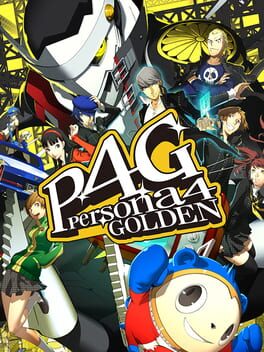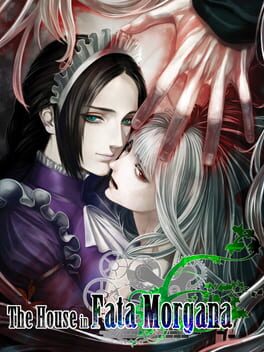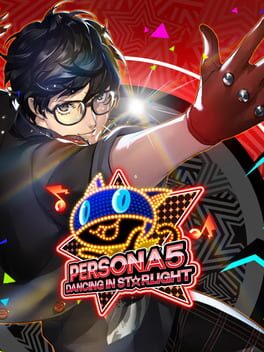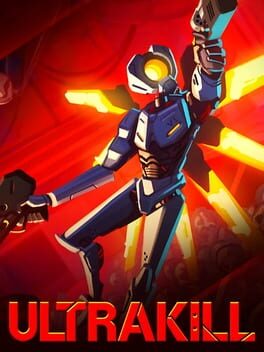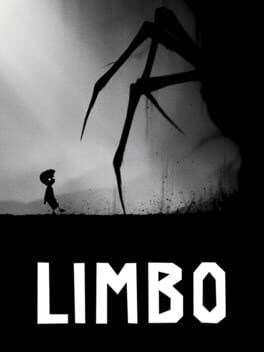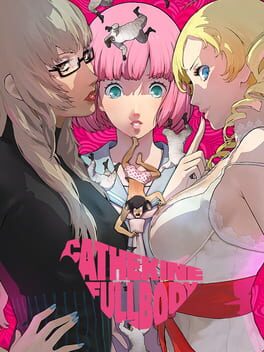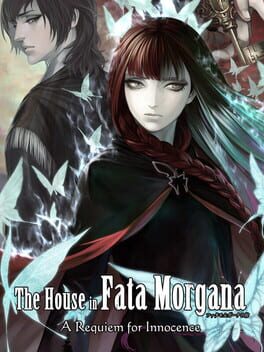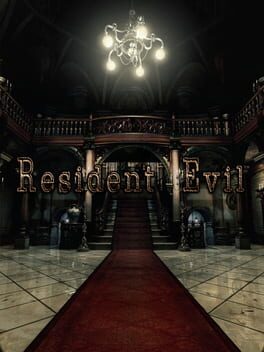NoahHerbert
2023
Wow the demo was good but after finishing the full game my expectations have been exceeded. Lies of P has succeeded tremendously in almost everything it set out to achieve. The setting of Krat inspired by the Belle Époque period lends itself beautifully to the style of gameplay found within this sub genre as during exploration and traversal, the ambience of the setting can really be appreciated. The visual design of the enemies is also noteworthy, particularly for the puppet type enemies and their animations.
Due to the nature of the fast and dynamic combat system, the developers were able to design complex and engaging movesets for bosses and elite type enemies which kept combat engaging throughout. I liked the addition of being able to recharge your healing resource through doing damage once exhausted as it allows players who are playing well the opportunity to push on further into a level or fell a boss instead of having to return to a stargazer just to replenish.
My only complaints with the game is it being too linear in nature and the colour palette being on the subdued side. Stunning debut title can't wait to see what the potential DLC has in store for us.
Due to the nature of the fast and dynamic combat system, the developers were able to design complex and engaging movesets for bosses and elite type enemies which kept combat engaging throughout. I liked the addition of being able to recharge your healing resource through doing damage once exhausted as it allows players who are playing well the opportunity to push on further into a level or fell a boss instead of having to return to a stargazer just to replenish.
My only complaints with the game is it being too linear in nature and the colour palette being on the subdued side. Stunning debut title can't wait to see what the potential DLC has in store for us.
2020
Every bit as good as its successor, centred around a more intimate, personal theme of accepting yourself and striving for the truth. This theme is most present in the social link aspect of the game, which is done excellently, deepening your investment in these characters, specifically your fellow party members, by telling these very emphatic human stories. Additionally, this also furthers your immersion, making the setting of Inaba feel less like just a game world and more like a real place with real people, which is funny when the map of Inaba is so limited.
While I certainly missed the intricate palaces from Persona 5, Persona 4 by no means has weak dungeon crawling, as each dungeon still oozes personality, and I generally found the battles on Hard difficulty more consistently engaging than Persona 5 even though it has more complex combat due to Baton Pass and Technical. This is because in Persona 5 Royal it is much easier to start battles with player advantage and battles are frequently over before the enemies’ turn whilst this is less the case in Persona 4 forcing you to consider your moves better and play more strategically. However, I do think Persona 5 still has Persona 4 beat on boss battles both visually and mechanically. The visual design of Persona 4’s bosses are still strong though, reaching the end of each dungeon was always a highlight, as I loved seeing how the twisted shadow of each victim would manifest. As in any Persona game the music is fantastic and does an excellent job of capturing the essence of the game.
Additionally, the scenes of the investigation team hanging out do a great job in convincing you that the group are genuine friends, and it was always a joy watching the characters interact with each other and seeing their relationships develop during these. Persona 4 is downright hilarious at times too which I can’t say about many other games.
In conclusion I think the best word that describes Persona 4 is ‘genuine', and I think that is an amazing achievement.
While I certainly missed the intricate palaces from Persona 5, Persona 4 by no means has weak dungeon crawling, as each dungeon still oozes personality, and I generally found the battles on Hard difficulty more consistently engaging than Persona 5 even though it has more complex combat due to Baton Pass and Technical. This is because in Persona 5 Royal it is much easier to start battles with player advantage and battles are frequently over before the enemies’ turn whilst this is less the case in Persona 4 forcing you to consider your moves better and play more strategically. However, I do think Persona 5 still has Persona 4 beat on boss battles both visually and mechanically. The visual design of Persona 4’s bosses are still strong though, reaching the end of each dungeon was always a highlight, as I loved seeing how the twisted shadow of each victim would manifest. As in any Persona game the music is fantastic and does an excellent job of capturing the essence of the game.
Additionally, the scenes of the investigation team hanging out do a great job in convincing you that the group are genuine friends, and it was always a joy watching the characters interact with each other and seeing their relationships develop during these. Persona 4 is downright hilarious at times too which I can’t say about many other games.
In conclusion I think the best word that describes Persona 4 is ‘genuine', and I think that is an amazing achievement.
2001
Even with its hefty reputation it still blew me away. Silent Hill 2 is absorbing, I beat it in two sittings, playing until almost two in the morning the first day. I think the main reason for this was because of its excellent atmosphere, which engulfs you like the fog has the sleepy town of Silent Hill. This is primarily achieved by its outstanding sound design which is instantly recognisable. The OST is another highlight and does an exceptional job reinforcing the themes and atmosphere of the game.
I love the small-scale exploration present in Silent Hill 2. Gradually, familiarising myself with the layout of a building, using the map to make sure nothing goes unchecked and ultimately solving these environmental puzzles was always really satisfying. Whilst the other puzzles here aren’t exactly complex, they do well enough to serve their purpose.
The quality of the story in Silent Hill 2 took me by surprise. It is a masterful meditation on grief and guilt and is for me the closest a video game has gotten to telling a story comparable to an arthouse film, in the way it desires to stimulate instead of just simply entertaining. The way it is integrated into the game was perfect too, there never felt like there was a disconnect between the story and gameplay segments, which I think is a problem in modern games which try to be cinematic to a fault. In conclusion play this game! It is an essential masterpiece which will be remembered for just how much ground it broke at the time it released and finally how it continues to be one of the finest examples of video games as art to this day.
I love the small-scale exploration present in Silent Hill 2. Gradually, familiarising myself with the layout of a building, using the map to make sure nothing goes unchecked and ultimately solving these environmental puzzles was always really satisfying. Whilst the other puzzles here aren’t exactly complex, they do well enough to serve their purpose.
The quality of the story in Silent Hill 2 took me by surprise. It is a masterful meditation on grief and guilt and is for me the closest a video game has gotten to telling a story comparable to an arthouse film, in the way it desires to stimulate instead of just simply entertaining. The way it is integrated into the game was perfect too, there never felt like there was a disconnect between the story and gameplay segments, which I think is a problem in modern games which try to be cinematic to a fault. In conclusion play this game! It is an essential masterpiece which will be remembered for just how much ground it broke at the time it released and finally how it continues to be one of the finest examples of video games as art to this day.
In this review I will not be trying to dissect the story of a House in Fata Morgana due to its scope and complexity however I still would like air my thoughts about it.
The House in Fata Morgana is a beautifully tragic story about love, hatred, regret, and forgiveness. The non-linear structure in which this story is told is a notable point of genius, as your perception of certain events or characters drastically shift in unexpected ways as the story develops. A lot of stories often fall into the trap of making characters too faultless or likeable and I think The House in Fata Morgana straddles the line perfectly, by writing characters that have depth and seem genuine. Furthermore, I like how during the story, we often swap perspectives, which again alters our perception of these characters, allowing us to come to empathise with each and every one of them no matter how irredeemable they originally appeared.
The ‘villain’ in The House in Fata Morgana is as equally unique as its plot, both of which I unfortunately can’t discuss without ruining the story. I can however talk about the music! The soundtrack here is extremely effective in creating the atmosphere of this mansion when our view of its interior is so limited. This is due to great compositions, a suitably gothic choice of instrumentation and the amazingly spectral quality of the vocals in these tracks. Furthermore, the way the soundtrack is utilised to better convey the tone during key scenes in absence of voice acting is genius. This is especially evident in its most haunting and memorable moments.
In conclusion, The House in Fata Morgana is a narrative triumph and culminates in a truly beautiful and unforgettable way, and I believe it has left a lasting impression on me as it for has for many others.
The House in Fata Morgana is a beautifully tragic story about love, hatred, regret, and forgiveness. The non-linear structure in which this story is told is a notable point of genius, as your perception of certain events or characters drastically shift in unexpected ways as the story develops. A lot of stories often fall into the trap of making characters too faultless or likeable and I think The House in Fata Morgana straddles the line perfectly, by writing characters that have depth and seem genuine. Furthermore, I like how during the story, we often swap perspectives, which again alters our perception of these characters, allowing us to come to empathise with each and every one of them no matter how irredeemable they originally appeared.
The ‘villain’ in The House in Fata Morgana is as equally unique as its plot, both of which I unfortunately can’t discuss without ruining the story. I can however talk about the music! The soundtrack here is extremely effective in creating the atmosphere of this mansion when our view of its interior is so limited. This is due to great compositions, a suitably gothic choice of instrumentation and the amazingly spectral quality of the vocals in these tracks. Furthermore, the way the soundtrack is utilised to better convey the tone during key scenes in absence of voice acting is genius. This is especially evident in its most haunting and memorable moments.
In conclusion, The House in Fata Morgana is a narrative triumph and culminates in a truly beautiful and unforgettable way, and I believe it has left a lasting impression on me as it for has for many others.
1994
Took me far too long to get around to this classic. The upgrades for Samus are still impressive and unique, consequently the environmental puzzle solving is super engaging, which is something a lot of modern Metroidvanias sorely lack. Some of the ways forward can be a bit obtuse but the satisfaction of finding the solution makes it worthwhile. I didn’t expect to enjoy some of the boss fights as much as I did, whilst what they expect from the player is quite simple, to run, gun, duck and jump, each did a good job differentiating themselves in the way they move about the arena, their movesets, attack patterns and of course in their distinct, beautiful pixel art. I do wish more platforming was incorporated into these battles however that may have over complicated things which I get. All the areas in the game are outstanding, with stellar level design throughout, the shortcuts connecting each area are also well thought out, meaning backtracking never became arduous.
In conclusion it is incredible to think that Super Metroid was released almost 30 years ago, I can’t imagine how futuristic it must have felt back then. Its depth is still astonishing and honestly it puts most modern Metroidvanias to shame.
In conclusion it is incredible to think that Super Metroid was released almost 30 years ago, I can’t imagine how futuristic it must have felt back then. Its depth is still astonishing and honestly it puts most modern Metroidvanias to shame.
Basically just an inferior version of the Persona 4 Dancing. Nothing burger social events, forgettable remixes. Having to play through the same songs repeatedly to unlock the ‘story’ content is a bore, why not make these all unlock by the time you have cleared each song just once? Also the music in Persona 5 while phenomenal is way worse off in a dancing game than Persona 4’s. I may just be burnt out on the gameplay after the prior entry but I couldn’t stomach any more. For now I’m shelving this which is rather rare for me but I guess this just speaks for how vapid this game is.
2020
In recent years I have been enjoying single-player FPS games less and less, I thought that maybe they just weren't for me anymore. I was glad to be proven wrong when playing Ultrakill. The gameplay is nuanced, with a truly impressive amount of player expression available. This is commonly missing in most shooters which explains my growing fatigue.
Stellar and diverse levels complement this amazing gameplay, although in classic boomer shooter fashion they are disconnected and do not flow into one another. Boss fights were an unexpected highlight especially those against V2 and Gabriel where your mastery of effective weapon switching, and evasion truly gets put to the test. These fights are relentless in the best possible way as the boss AI is reminiscent of how you yourself play, so the satisfaction upon besting these two is immense. The integration of checkpoints was a good choice also as they prevent frustration on higher difficulties whilst not being too egregious.
I’m looking forward to when I get to blitz my way through the newly released Layer 7. As after the holidays are over, I go back and reunite with my primary PC setup, namely my nice peripherals. So yes, I’ve been holding off so that I can experience it the right way :)
Stellar and diverse levels complement this amazing gameplay, although in classic boomer shooter fashion they are disconnected and do not flow into one another. Boss fights were an unexpected highlight especially those against V2 and Gabriel where your mastery of effective weapon switching, and evasion truly gets put to the test. These fights are relentless in the best possible way as the boss AI is reminiscent of how you yourself play, so the satisfaction upon besting these two is immense. The integration of checkpoints was a good choice also as they prevent frustration on higher difficulties whilst not being too egregious.
I’m looking forward to when I get to blitz my way through the newly released Layer 7. As after the holidays are over, I go back and reunite with my primary PC setup, namely my nice peripherals. So yes, I’ve been holding off so that I can experience it the right way :)
2010
Refreshingly short and simple puzzler, the black and white visuals are distinctive and clean. Starts a little slow but picks up quickly with more competant puzzles cropping up in the second half. Playdead go onto perfect their brand of environmental story telling in their subsequent game, however Limbo is comendable for establishing the base off of which Inside builds.
2012
Journey is beautiful and soothing. The puzzles are simple but fun to solve, consequently the flow of the game is never halted which I really appreciate. The art direction is absolutely breathtaking, from the expansive vistas to the way the environment and its other inhabitants respond to your interaction. The traversal elements in Journey helps keep the player engaged while also highlighting or showcasing its amazing visuals from different angles and elevations, sliding down sand dunes should absolutely be in more games. Finally I just love the concept of seeing your destination from afar, and being able to measure your progress from your proximity to it. I look forward to playing another title by this developer when my mood compels me to, i.e when I'm burnt out from long RPGs and am looking for something short to just wash over me :)
Symphony of the Night is masterful. Every aspect of the game is executed impeccably and unlike many games, it is concise and concentrated. To begin, every room oozes detail, each pixel feels like it has been meticulously placed, animations are fluid, think Alucard’s mesmerising walk cycle, backgrounds move and shift in a realistic way, the melding of 3D with 2D is utilised to great effect, allowing for effect, detail and subsequently depth that would be impossible to convey in just a pixel grid. Each area within Dracula’s castle has its own distinct identity, this is thanks to the outstanding and varied art direction throughout as well as the accompanying compositions which each excellently embody and evoke the mood of its corresponding location, defining them just as much as their visuals. Progression through the castle is smooth and mostly unceasing due to the refined map layout, which cannot be said for many Metroidvanias, backtracking is also minimal because of the tasteful placement of warp rooms.
I played this game completely blind and unspoiled so when I got to the Richter fight, and I rolled credits for the first time I understandably felt slightly underwhelmed by this conclusion. Luckily the game just compelled me to keep playing, so I went about filling in what I thought were the final tiles of the map, and in the process, I managed to obtain the holy glasses from Maria and initiate the Inverted Castle without outside interference or anticipation of what was to come, which was immensely satisfying. The spectacle of the Inverted Castle is still great, navigating the castle in reverse provides an interesting challenge as trying to rely on your memory can be a double-edged sword. The introduction of new, tougher enemies and often a higher density of them in each room keeps things from stagnating. I love the boss rush quality that crops up here, escalating to the final fight with Dracula which while a bit of a slog, delivers in cheesy, iconic dialogue and most importantly finality.
I played this game completely blind and unspoiled so when I got to the Richter fight, and I rolled credits for the first time I understandably felt slightly underwhelmed by this conclusion. Luckily the game just compelled me to keep playing, so I went about filling in what I thought were the final tiles of the map, and in the process, I managed to obtain the holy glasses from Maria and initiate the Inverted Castle without outside interference or anticipation of what was to come, which was immensely satisfying. The spectacle of the Inverted Castle is still great, navigating the castle in reverse provides an interesting challenge as trying to rely on your memory can be a double-edged sword. The introduction of new, tougher enemies and often a higher density of them in each room keeps things from stagnating. I love the boss rush quality that crops up here, escalating to the final fight with Dracula which while a bit of a slog, delivers in cheesy, iconic dialogue and most importantly finality.
1994
Such an essential classic. I love the style of fantasy world present in FFVI, the quality of the towns were especially a highlight, NPCs actually say interesting and varied things that provide insight into the story or where to go next; benefiting significantly the believability of this world and consequently the immersion I felt.
The story was also very compelling specifically in it's human element, the backstories for each character being particularily memorable. The way in which party members are introduced across the duration of the game kept me invested as each character has a skill unqiue to them, these were immediately fun to incorporate into battles and helped keep combat from getting too stale. The music is some of the best in any game.
Finally the conclusive fight against Kefka is unforgettable in it's scope and visual design, one of the primary reasons I like JRPGs is because of the often amazing spectacle of their boss fights and FFVI delivers on that.
The story was also very compelling specifically in it's human element, the backstories for each character being particularily memorable. The way in which party members are introduced across the duration of the game kept me invested as each character has a skill unqiue to them, these were immediately fun to incorporate into battles and helped keep combat from getting too stale. The music is some of the best in any game.
Finally the conclusive fight against Kefka is unforgettable in it's scope and visual design, one of the primary reasons I like JRPGs is because of the often amazing spectacle of their boss fights and FFVI delivers on that.
2018
An exquisite puzzle platformer with truly special visuals. I love the way the game is structured into four distinct stages each with a corresponding colour and where a new pairing ability is introduced. The art reminds me a lot of the film Belladonnna of Sadness in the way it mimics water colour paints, and it is just stunning. Compared to Journey, another short adventure style game it is a lot less walking sim and the puzzle's struck the perfect balance between complexity and simplicity, therefore the momentum of the game is never lost. The score was suitably poignant for what the game is trying to convey and really florishes, beautifully at moments for great effect, think back to the beginning of the game when Gris is falling. Audio design beyond that is equally impressive, everything in this game sounds so uniquely organic. In conclusion Gris is breathtaking and I can't wait to see this studio tackle a new game with their outstanding art and audio design.
2019
It was refreshing to play Catherine, a game in Atlus’s singular style that wasn't an 80+ hour long behemoth. Easily one of the strangest games I’ve played in a good way, the integration of gameplay and story is seamless but also so unconventional. The story was always thoroughly entertaining, with well written dialogue, which can be hilarious at times, for example what some of the sheep in the nightmare have to say. The voice actors in this game absolutely kill it, particularly Vincent’s voice actor who really captures the characters indecisiveness and anxiety, while still making him sympathetic, earnest and ultimately believable.
The anime cutscenes are all excellent and some have a cool motion effect applied to them, this is present in the scene where Catherine and Katherine are arguing. Character models are surprisingly superior to those in Persona 5 Royal even though they both launched in the same year. The gameplay is commendable in its uniqueness however it was a struggle to get adjusted to initially, and can become quite repetitive at times, thankfully the climbing sequences are broken up frequently with cutscenes and time spent at the Stray Sheep. I love how sheep from the nightmare crop up in the stray sheep from time to time. New blocks are regularly introduced to help prevent monotony from setting in, this does a serviceable job in progressing the gameplay, forcing you to think more consciously about how you tackle the stages.
It would be fascinating to see Atlus do more games in this vein as it shows that they have a lot to offer beyond the JRPGs they are so practiced at. Sadly, it seems very unlikely but one can only hope.
The anime cutscenes are all excellent and some have a cool motion effect applied to them, this is present in the scene where Catherine and Katherine are arguing. Character models are surprisingly superior to those in Persona 5 Royal even though they both launched in the same year. The gameplay is commendable in its uniqueness however it was a struggle to get adjusted to initially, and can become quite repetitive at times, thankfully the climbing sequences are broken up frequently with cutscenes and time spent at the Stray Sheep. I love how sheep from the nightmare crop up in the stray sheep from time to time. New blocks are regularly introduced to help prevent monotony from setting in, this does a serviceable job in progressing the gameplay, forcing you to think more consciously about how you tackle the stages.
It would be fascinating to see Atlus do more games in this vein as it shows that they have a lot to offer beyond the JRPGs they are so practiced at. Sadly, it seems very unlikely but one can only hope.
This review contains spoilers
I found the pacing of the story to be quite slow even in comparison to the original, however that may be because I played part I of the main scenario across many days, missing days even. On the contrary I finished part II in just one day without much interruption. The story is basically an expansion on Morgana’s backstory which we see as a flashback in Door VIII told with very minimal visuals. This time around the story is fleshed out further, with dialog and character sprites, which are drawn anew here and look much improved. It is told in a more intimate way, largely from Jacopo’s point of view, so we get to see some new scenes in part II regarding his journey into Lordship and consequent moral decline. The game does just about enough to convince you that it is possible for Jacopo to undergo such a severe change in character across the duration of the game. It was fascinating though, to see this transformation, to see Jacopo bound by the strains of power and consequently undone by it. Odilon was endearing, his relationship with Jacopo felt authentic and fatherly, subsequently his death was the perfect device to justify Jacopo’s future bitterness and depravity. Although this felt justifiable, what didn’t was the drastic dissimilarity between Jacopo’s internal monologue and subsequent actions regarding Morgana in the latter half of part II, even in his current mindset this felt unbelievable, and I don’t like how he acts like his time spent at the brothel was eons ago, anyway it felt like a major plot contrivance to me. Experiencing the ending first hand was brutal but anyone playing this already knew what was coming.
Part I does see some significant changes too, such as the introduction of three new characters: Gratien, Ceren and Lord Barnier. Their presence in the narrative does help keep things from becoming a complete bore as the trajectory of the story remains unchanged. I particularly like the characterisation of Lord Barnier, he is utterly insane and quite the memorable villain. I also really enjoyed seeing Morgana and Jacopo’s relationship blossom here, their back and forth was always engaging, and their growth felt organic. The standout scenes between them being when he first treats Morgana with the ointment and when he shelters her after she runs away from the brothel. Unfortunately, the first part is plagued with a lot of drivel dialogue in my opinion, which does drag it down for me.
The soundtrack whilst having some great additions, such as He Love You, doesn’t possess the same variety as the original game, with a lot less vocally orientated tracks which were usually the standout in the main entry. That said, the new piano tracks, which are the most prominently used are excellent, namely Singing the Glow of Sunrise, even if they just aren’t as distinctive as songs like Cicio in the previous entry. However, I do recognise the narrative and tonal reasons behind the inclusion of more sombre paired backed piano tracks in favour of the more dramatic, spectral and gothic tracks from the original game. On another note, I was baffled when certain other tracks played, as these start off sounding incredibly like royalty-free music before progressing into something different further in. I’m not sure if I’m just going crazy but I’m convinced they used melodies from some well-known royalty free music to build off whilst keeping these in at the beginning of the final versions, which is quite the bizarre decision if that is the case, doesn’t exactly do wonders for immersion but maybe the composer(s) thought it was funny I don’t know.
In conclusion I think Requiem for Innocence is worth playing if are a die-hard fan of the main game, however it is not at all essential. It doesn’t really do much to further the story and is missing the element of mystery and non-linearity in its narrative that made The House in Fata Morgana so engaging and original.
Part I does see some significant changes too, such as the introduction of three new characters: Gratien, Ceren and Lord Barnier. Their presence in the narrative does help keep things from becoming a complete bore as the trajectory of the story remains unchanged. I particularly like the characterisation of Lord Barnier, he is utterly insane and quite the memorable villain. I also really enjoyed seeing Morgana and Jacopo’s relationship blossom here, their back and forth was always engaging, and their growth felt organic. The standout scenes between them being when he first treats Morgana with the ointment and when he shelters her after she runs away from the brothel. Unfortunately, the first part is plagued with a lot of drivel dialogue in my opinion, which does drag it down for me.
The soundtrack whilst having some great additions, such as He Love You, doesn’t possess the same variety as the original game, with a lot less vocally orientated tracks which were usually the standout in the main entry. That said, the new piano tracks, which are the most prominently used are excellent, namely Singing the Glow of Sunrise, even if they just aren’t as distinctive as songs like Cicio in the previous entry. However, I do recognise the narrative and tonal reasons behind the inclusion of more sombre paired backed piano tracks in favour of the more dramatic, spectral and gothic tracks from the original game. On another note, I was baffled when certain other tracks played, as these start off sounding incredibly like royalty-free music before progressing into something different further in. I’m not sure if I’m just going crazy but I’m convinced they used melodies from some well-known royalty free music to build off whilst keeping these in at the beginning of the final versions, which is quite the bizarre decision if that is the case, doesn’t exactly do wonders for immersion but maybe the composer(s) thought it was funny I don’t know.
In conclusion I think Requiem for Innocence is worth playing if are a die-hard fan of the main game, however it is not at all essential. It doesn’t really do much to further the story and is missing the element of mystery and non-linearity in its narrative that made The House in Fata Morgana so engaging and original.
2014
Spencer Mansion is absolutely a new favourite videogame locale of mine after finishing Resident Evil for the first time this January. An amazing realisation of a Gothic manor house, the muted colours, the sparse and strangely orderly interior convey just how haunted and uninviting it is. The sombre soundtrack exceptionally augments the art direction, constructing this palpably evil and mysterious atmosphere. The integration of the pre rendered backgrounds is still magic to me, they are just so incredibly detailed even by today’s standards. Character models look just as good, comparable even to late seventh generation titles, which is unbelievable. Yes, sure I did play the remastered version, but these are still the bones of a game that released twenty-two years ago.
Aside from the egregious door-opening cutscenes, which in hindsight I should’ve just modded out, exploring the mansion was always a thrill. The game has you slowly unlock distinct parts of the mansion, tying progression to exploration and puzzle solving which is excellent. The structure of Spencer Mansion is masterfully thought out, a true bastion of level design. Furthermore, I love the quality of deliberateness in Resident Evil’s gameplay, every choice feels important. For example, do you risk postponing saving to make the most out of your Ink Ribbons, decide to torch this corpse in anticipation that you will have to come here again. Occasionally the limited save system can lead to frustration as using your Ink Ribbons unwisely can lead to the player having to replay significant stretches, but at the same time it is fundamental in preserving the aspect of tension elicited by the gameplay. Manoeuvring around the zombies was also fun, as it can either be done by smartly directing them to the sides of a room or corridor so that you can out space their grab entirely, or for skilled players you can actually dodge these grabs by moving backwards when it is telegraphed which is extremely useful in tighter areas, when you are low on ammo or can’t warrant the usage. This again plays into resource management as it is entirely up to the player to decide whether they risk being grabbed, and wasting a healing or defensive item, or on the other hand wasting precious bullets which are essential for clearing boss fights later on, each scenario is like a puzzle in itself, leaving you to find the optimal way to overcome it.
On another note, during the early hours of my playthrough, I found myself being a bit discombobulated by the controls. This was because the default modern controls while easier and more responsive i.e. turning speed, aren’t seamless, as they don’t possess a direction that always corresponds to forward and in classic survival horror fashion the camera changes position constantly, with your directional input being dependent on this. To fix the problem that would arise from this it was made so unless you take your thumb off the stick you will keep moving in the direction you were before the camera change, however this causes the controls to be inconsistent, as it locks slightly, so repositioning Jill can become difficult. Unfortunately, I found the tanks controls even worse as they are so unbelievably stiff, in comparison to Silent Hill 2, therefore I was forced to make a compromise with the new controls which are ultimately okay for the most part once you become adjusted.
In conclusion the amalgamation of decision making, resource management and engaging exploration through a memorable locale makes Resident Evil truly special. I’m look forward to working my way through its future entries.
Aside from the egregious door-opening cutscenes, which in hindsight I should’ve just modded out, exploring the mansion was always a thrill. The game has you slowly unlock distinct parts of the mansion, tying progression to exploration and puzzle solving which is excellent. The structure of Spencer Mansion is masterfully thought out, a true bastion of level design. Furthermore, I love the quality of deliberateness in Resident Evil’s gameplay, every choice feels important. For example, do you risk postponing saving to make the most out of your Ink Ribbons, decide to torch this corpse in anticipation that you will have to come here again. Occasionally the limited save system can lead to frustration as using your Ink Ribbons unwisely can lead to the player having to replay significant stretches, but at the same time it is fundamental in preserving the aspect of tension elicited by the gameplay. Manoeuvring around the zombies was also fun, as it can either be done by smartly directing them to the sides of a room or corridor so that you can out space their grab entirely, or for skilled players you can actually dodge these grabs by moving backwards when it is telegraphed which is extremely useful in tighter areas, when you are low on ammo or can’t warrant the usage. This again plays into resource management as it is entirely up to the player to decide whether they risk being grabbed, and wasting a healing or defensive item, or on the other hand wasting precious bullets which are essential for clearing boss fights later on, each scenario is like a puzzle in itself, leaving you to find the optimal way to overcome it.
On another note, during the early hours of my playthrough, I found myself being a bit discombobulated by the controls. This was because the default modern controls while easier and more responsive i.e. turning speed, aren’t seamless, as they don’t possess a direction that always corresponds to forward and in classic survival horror fashion the camera changes position constantly, with your directional input being dependent on this. To fix the problem that would arise from this it was made so unless you take your thumb off the stick you will keep moving in the direction you were before the camera change, however this causes the controls to be inconsistent, as it locks slightly, so repositioning Jill can become difficult. Unfortunately, I found the tanks controls even worse as they are so unbelievably stiff, in comparison to Silent Hill 2, therefore I was forced to make a compromise with the new controls which are ultimately okay for the most part once you become adjusted.
In conclusion the amalgamation of decision making, resource management and engaging exploration through a memorable locale makes Resident Evil truly special. I’m look forward to working my way through its future entries.

